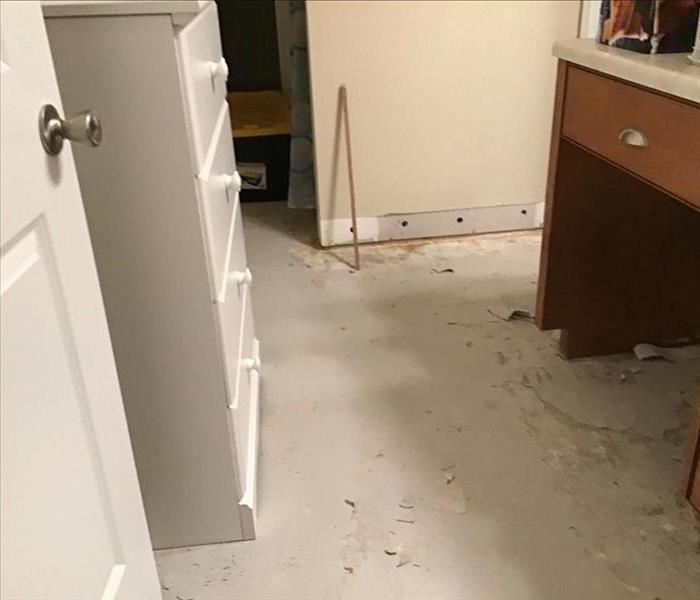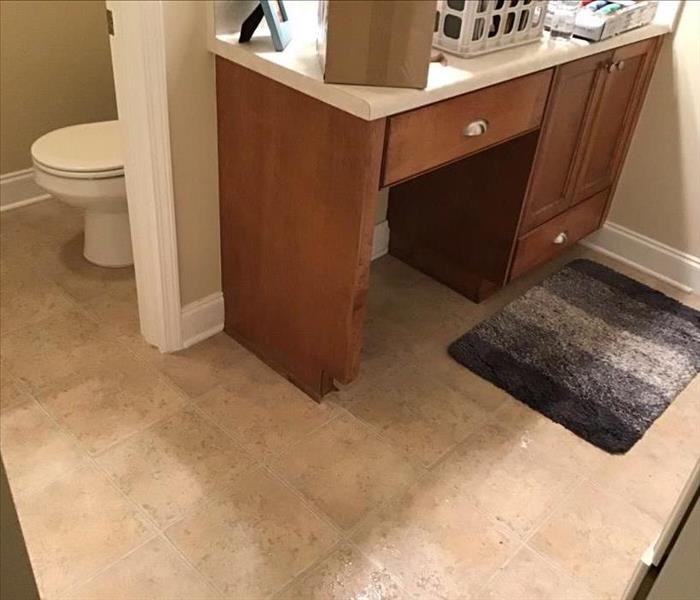
Step 4: Drying and Dehumidification
Our Water Damage Restoration Process
Drying Your Coral Springs Property
After extraction, drying is necessary to remove any lingering moisture from surfaces and contents in your home. SERVPRO technicians use industrial-grade centrifugal air movers paired with dehumidification equipment to address the full breadth of damage to your Coral Springs home.
Positioning is Key for Drying
The proper placement of drying equipment in your Coral Springs property is a must. Accomplishing this requires calculation based on the location of the damage, the structures affected, available power sources, and other factors.
- Clean water damages may require only one air mover per 150 to 300 square feet. Gray and black water may need air movers every 50 to 60 square feet.
- Circular airflow is achieved by placing air movers at 45-degree angles to walls in a clockwise pattern.
- Polyethylene chambers can be constructed to speed up the process, especially in open areas.
- Low-grain refrigerant dehumidifier setup is based on calculating pints of water that can be removed per day. Desiccant dehumidifiers are calculated based on air exchanges per hour.
Balancing Air Movement & Dehumidification
If the water damage has too few air movers, drying is much slower because there is not enough movement to allow dehumidifiers to evaporate moisture. However, if too many air movers overwhelm dehumidification tools, it can create secondary water damages. Drying too much can have adverse effects on surfaces like wood, which need a certain amount of moisture to maintain their structure.
Drying / Dehumidification
Our Professionals will use room measurements, temperature, and relative humidity to determine the optimal number of air movers and dehumidifiers to dry your home or business. We’ll carefully monitor the progress using moisture meters until the materials return to acceptable drying goals.
- Use Dehumidification Equipment
- Use Monitoring Equipment to Track Progress
Monitor Floor and Walls
We check the moisture levels to monitor the drying process.
- Monitor Floors
- Monitor Walls
Drying Equipment
- Industrial-grade dehumidifiers help prevent secondary water damage like swelling and warping of floors, walls, and furniture.
- High-speed air movers create airflow across walls, carpets, pads, and furniture, which accelerates the evaporation of moisture.

 24/7 Emergency Service
24/7 Emergency Service




